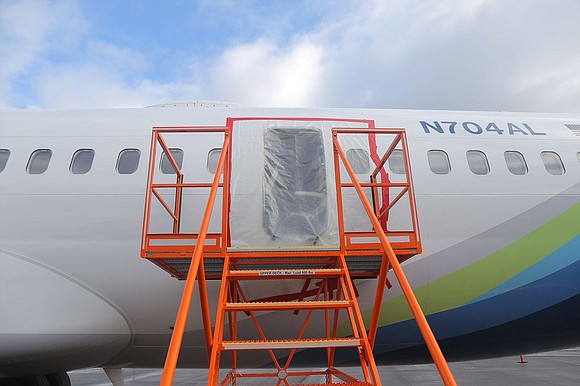What happened after the Alaska Airlines flight took off, in 5 charts
1/9/2024, 7:21 p.m.

Originally Published: 09 JAN 24 14:21 ET
Updated: 09 JAN 24 14:26 ET
By Matt Stiles and Renée Rigdon, CNN
(CNN) — Two major US airlines are scrambling to deal with cancellations and newly mandated inspections after the Federal Aviation Administration grounded 171 planes in the wake of Friday’s mid-flight blowout aboard an Alaska Airlines flight.
That’s when a Boeing 737 Max 9 lost a chunk of its fuselage just minutes into a trip from Portland, Oregon to Ontario, California. The depressurized plane returned safely to the airport but sparked an investigation by federal officials and fresh scrutiny on Boeing and the 737 Max 9 models used by airlines in the US.
CNN analyzed industry data to see how the event unfolded.
The harrowing journey on Friday, which involved the separation of a plugged door panel during the plane’s ascent from Portland International Airport, began at 5:07 p.m. local time.
The airliner climbed initially to 16,300 feet, about halfway to a cruising altitude for a commercial flight. Moments later, it descended rapidly, turning from its path and landing at 5:26 pm, according to industry tracker Flightradar 24.
As many as 50 seats on the flight were empty, Alaska Airlines has said, including the two immediately next to the hole left in the fuselage by the dislodged door panel.
United Airlines operates 78 and Alaska Airlines operates 65 of the Boeing 737 Max 9 models. At least 11 carriers use it worldwide, according to Flightradar 24, though not all of them operate in the US.
The FAA-mandated inspections prompted hundreds of flight cancellations from Saturday to Tuesday, according to FlightAware.
The inspections were expected to take around four to eight hours per aircraft, the FAA said — perhaps keeping the planes grounded for days. Alaska Airlines, for its part, warned of “significant cancellations” through the first half of this week.
Most of those models operating today use a seating configuration that doesn’t require the use of a rear emergency exit door. In those cases, the door is “plugged” — as was intended on the Alaska Airlines flight.
It was this panel that appears to have dislodged from the aircraft mid-flight.
The National Transportation Safety Board said Monday that it had recovered the failed door plug and would send it to a laboratory for examination. The FAA said the aircraft under scrutiny would remain grounded pending inspections to both right and left cabin door plugs and related components and fasteners.
“Operators must also complete corrective action requirements based on findings from the inspections prior to bringing any aircraft back into service,” the agency said Monday.
In addition to operational disruptions for airlines and passengers, the incident could also ratchet up pressure and scrutiny on Boeing, the plane’s manufacturer. The aviation giant has struggled to regain its reputation following two high-profile and deadly crashes of a previous 737 Max model several years ago.
Those crashes, which involved problems with flight operations software and gaps in pilot training, killed more than 340 passengers in 2018 and 2019. They also prompted a 20-month grounding by the FAA and cost Boeing an estimated $20 billion in customer compensation, legal bills and other expenses.
United Airlines said Monday that it found “installation issues” during preliminary inspections of its fleet conducted over the weekend after the Portland flight, saying that the findings were related to loose bolts in the door plugs.
Boeing, whose shares stumbled 8% on Monday, said it would help its customers to address any issues discovered during inspections. “We are committed to ensuring every Boeing airplane meets design specifications and the highest safety and quality standards,” the company said in a statement. “We regret the impact this has had on our customers and their passengers.”
The-CNN-Wire




